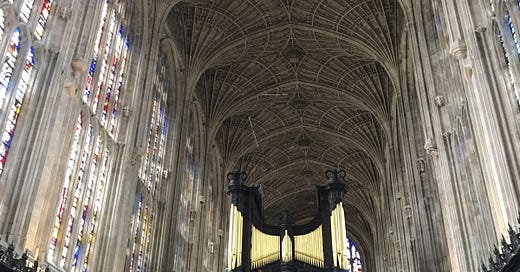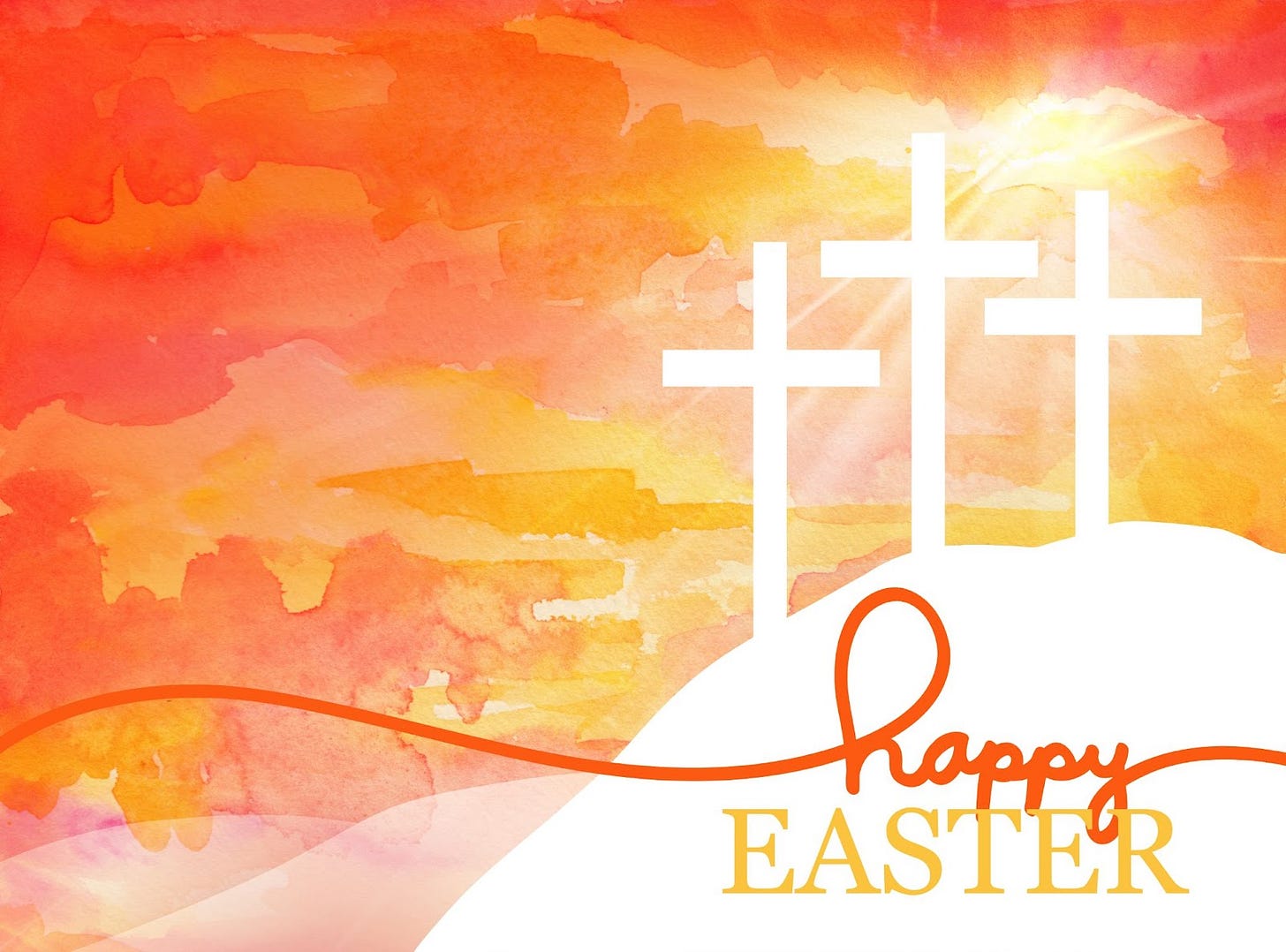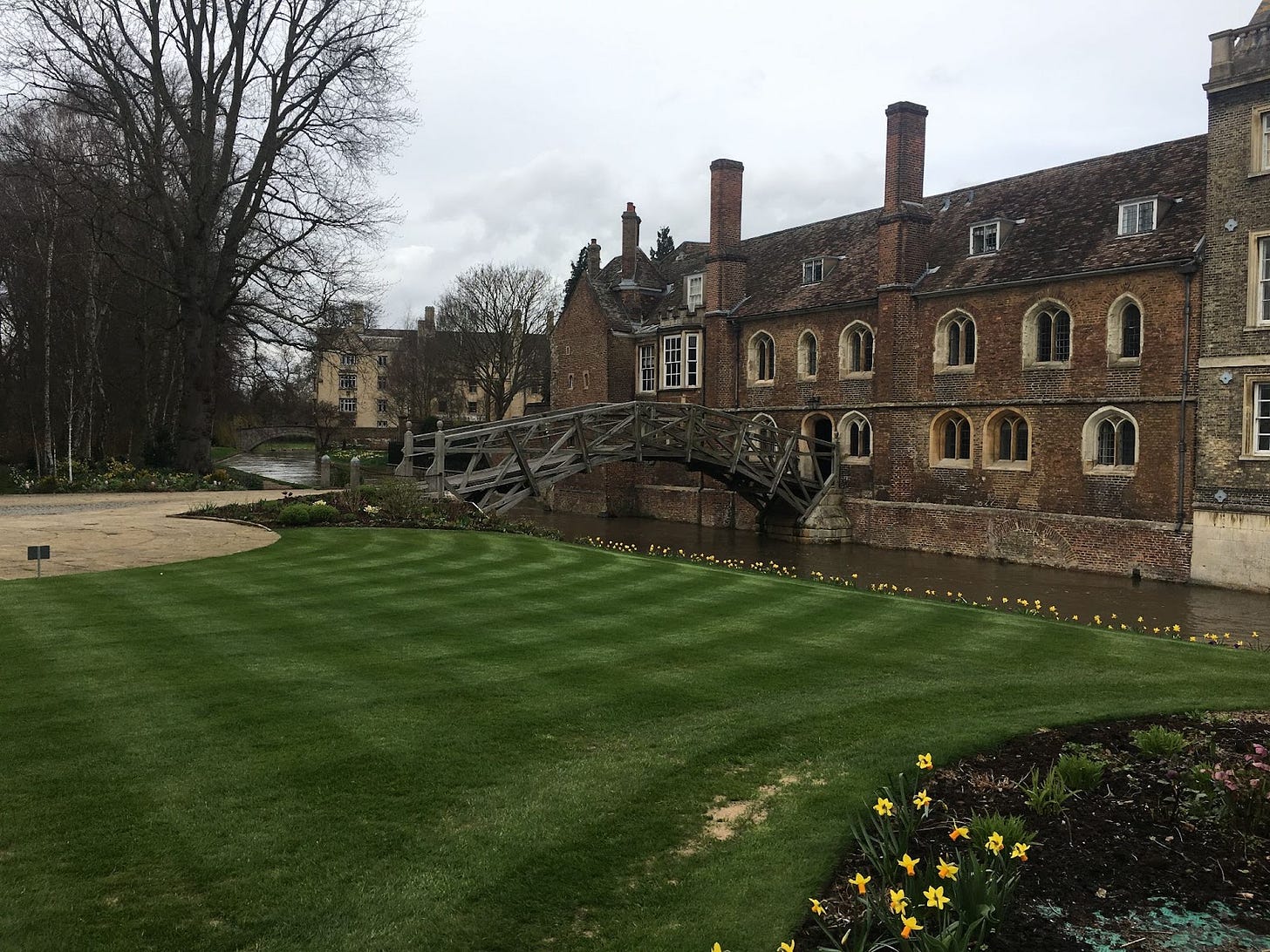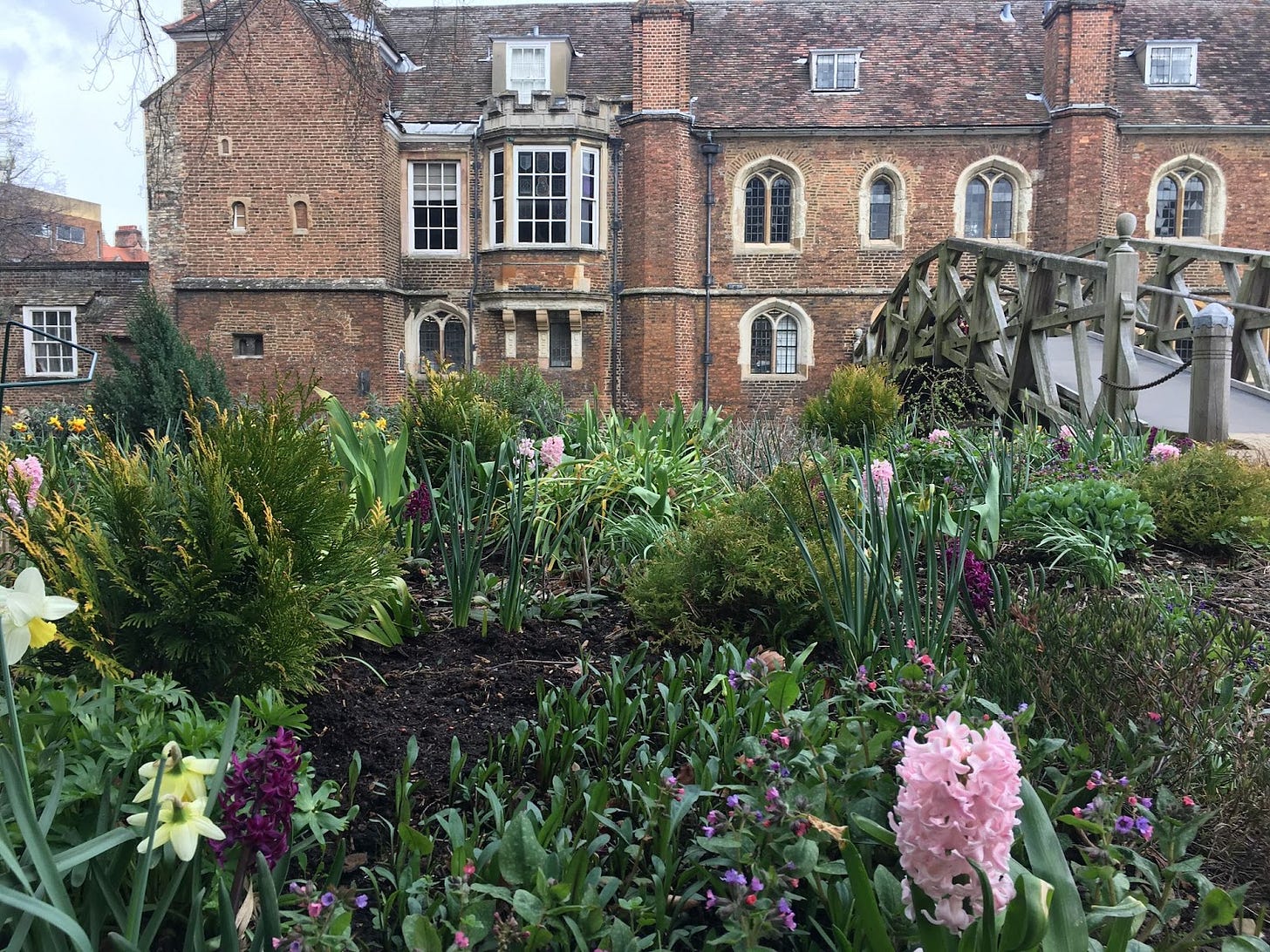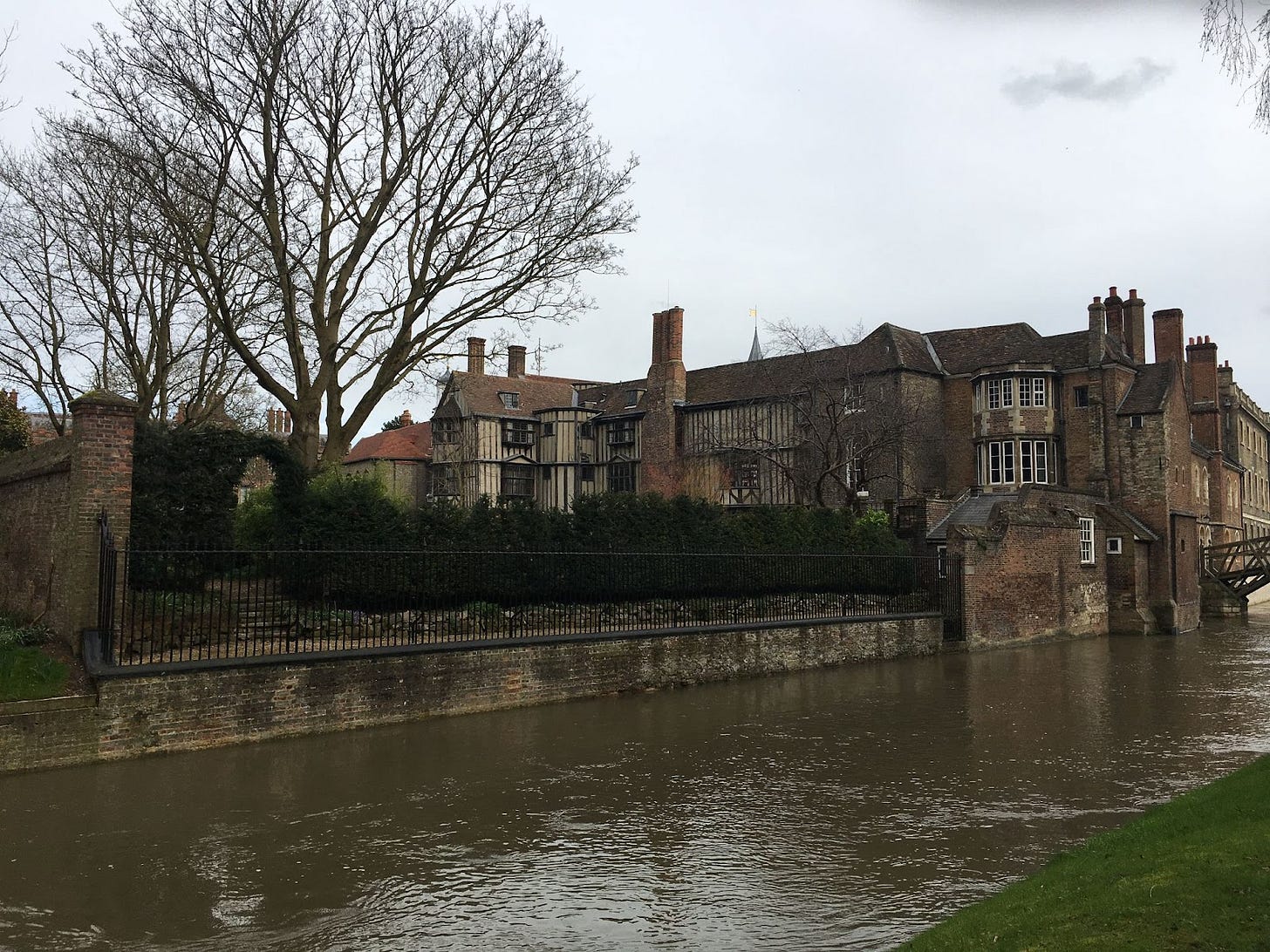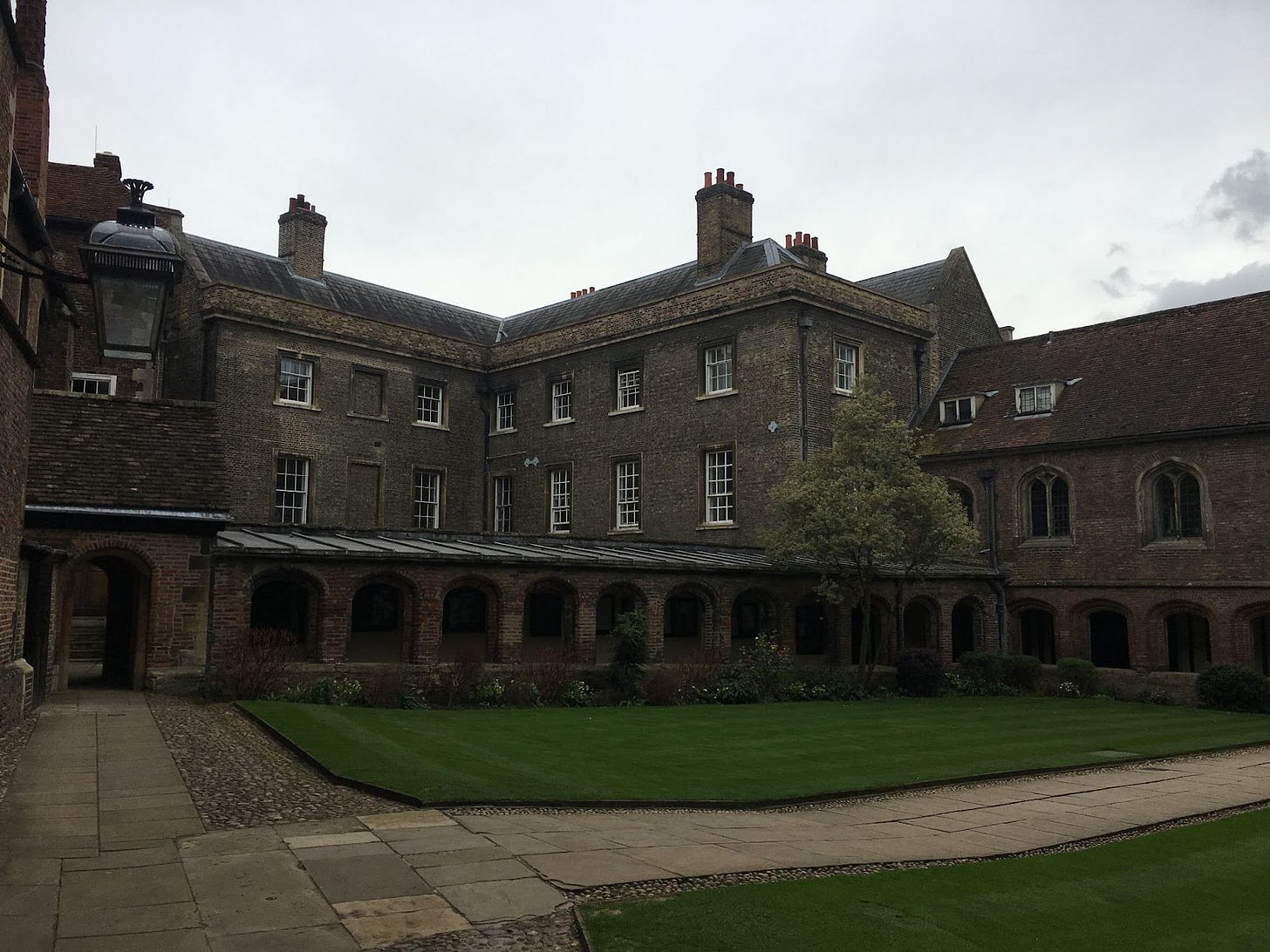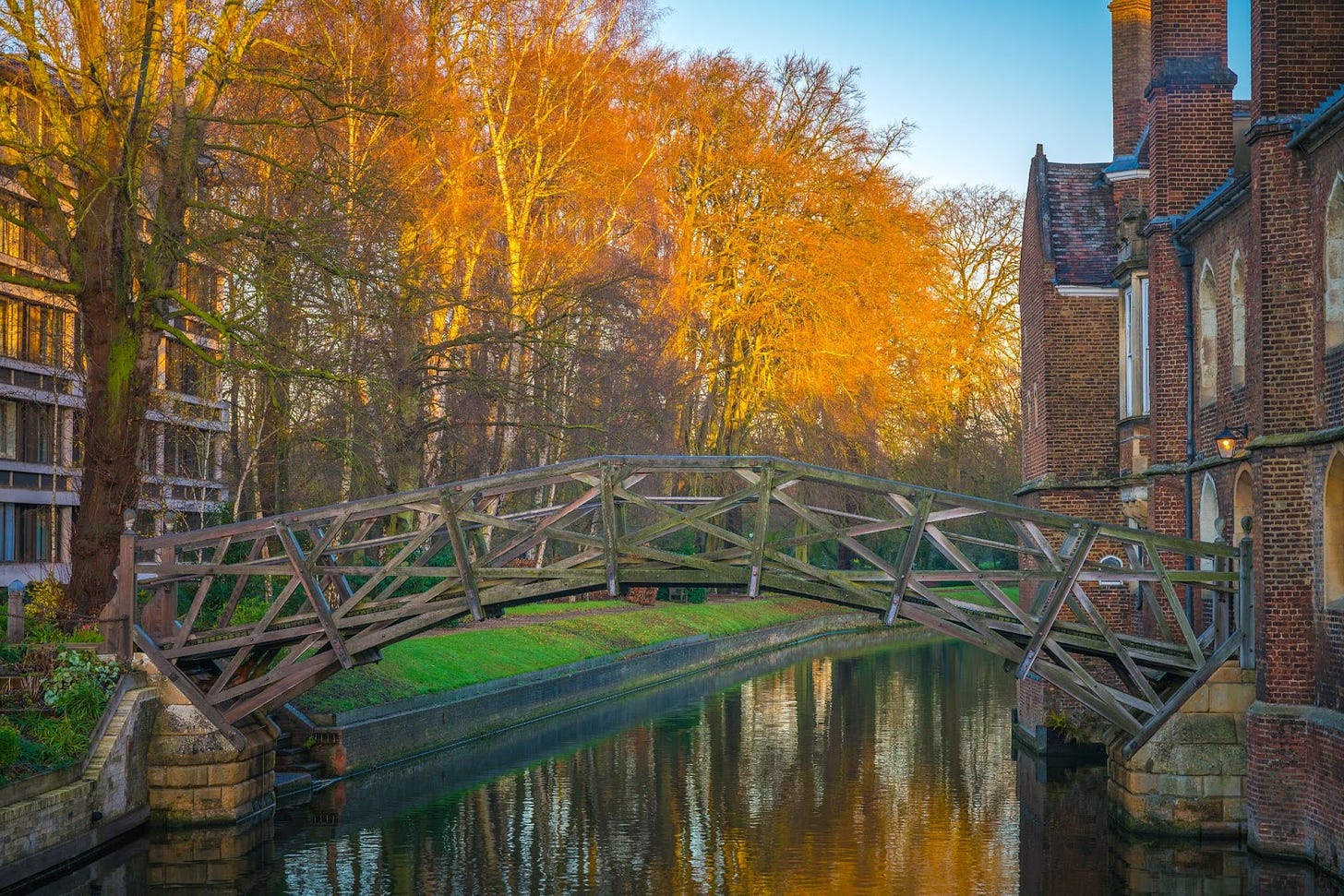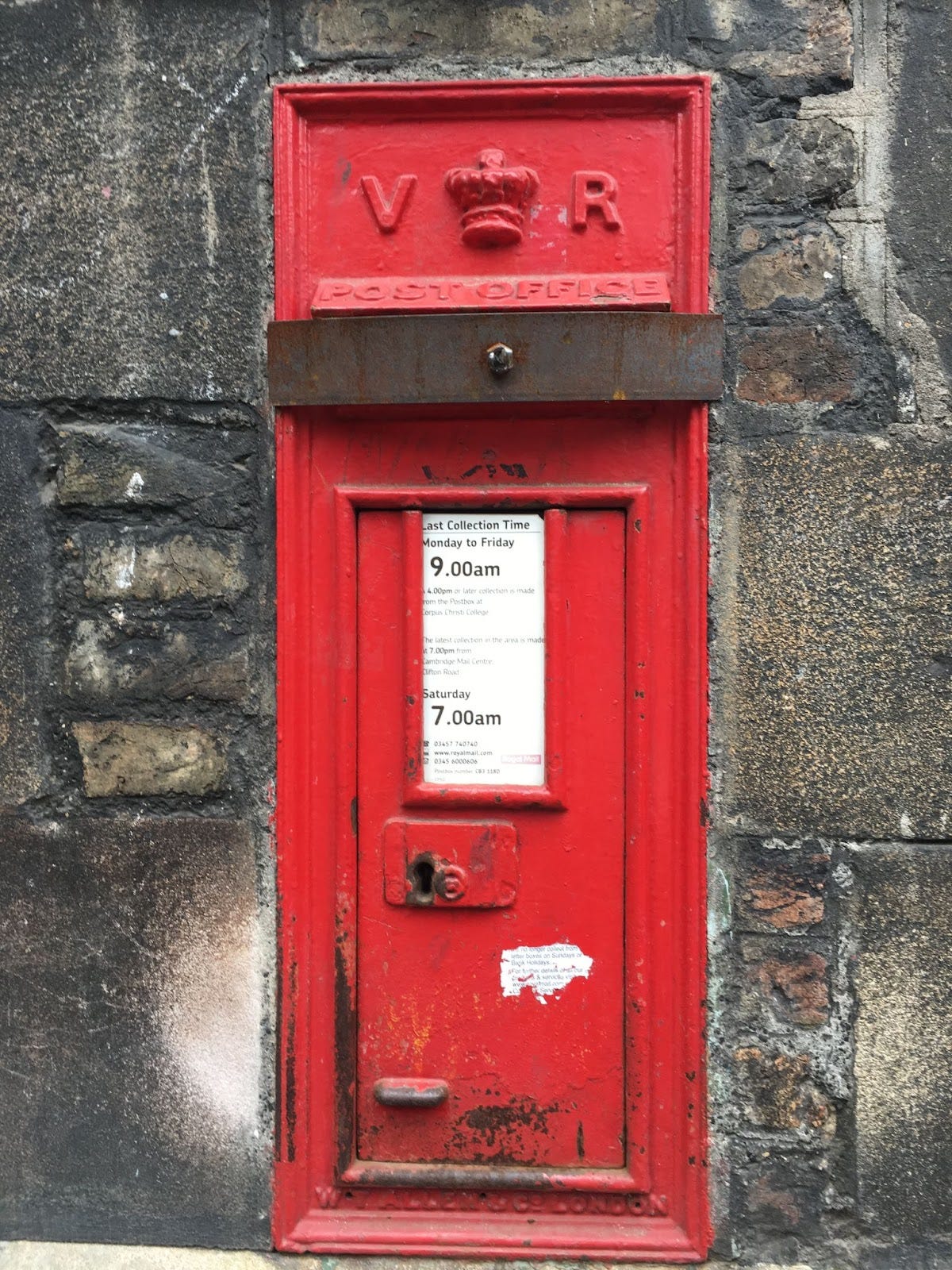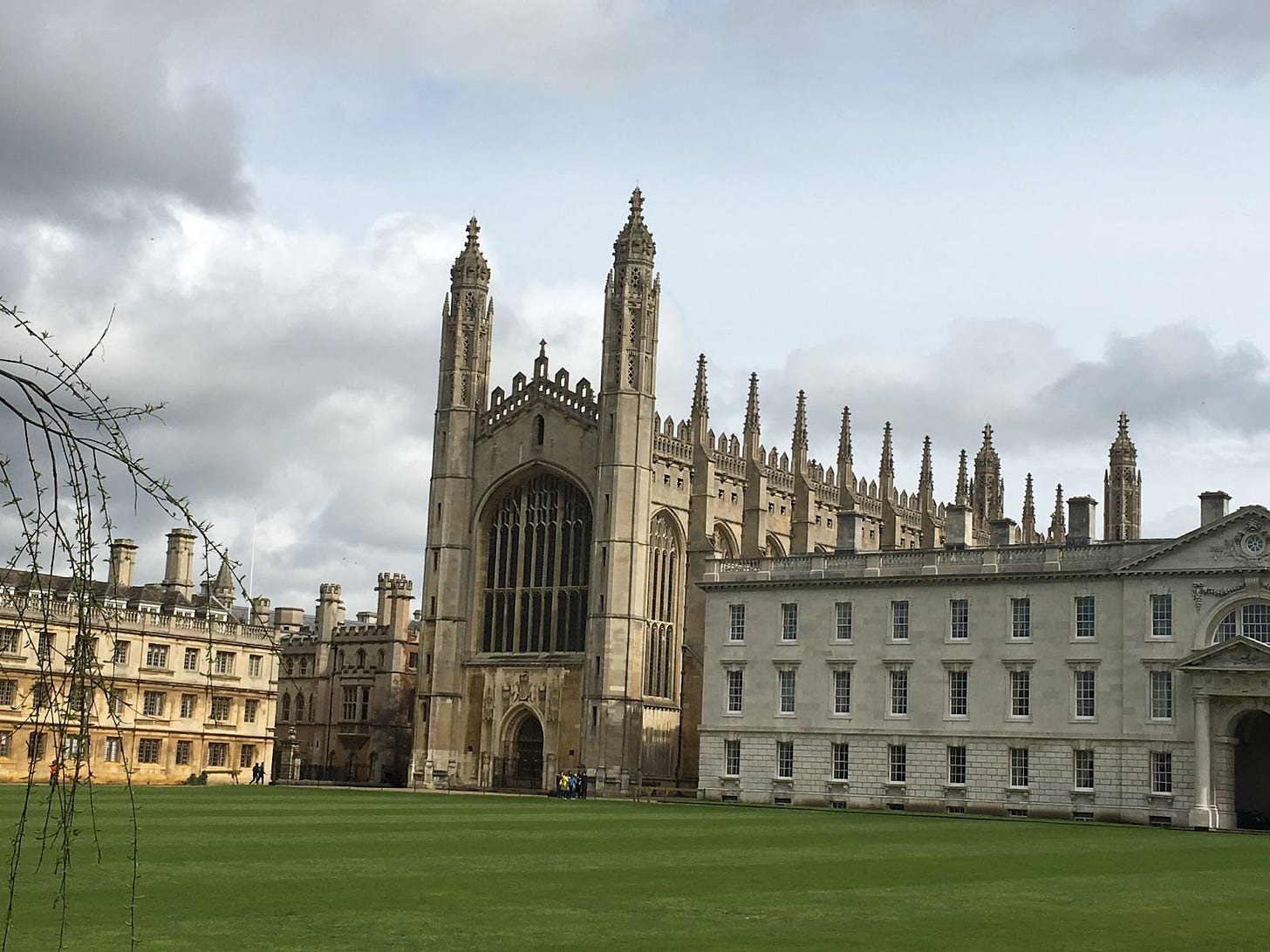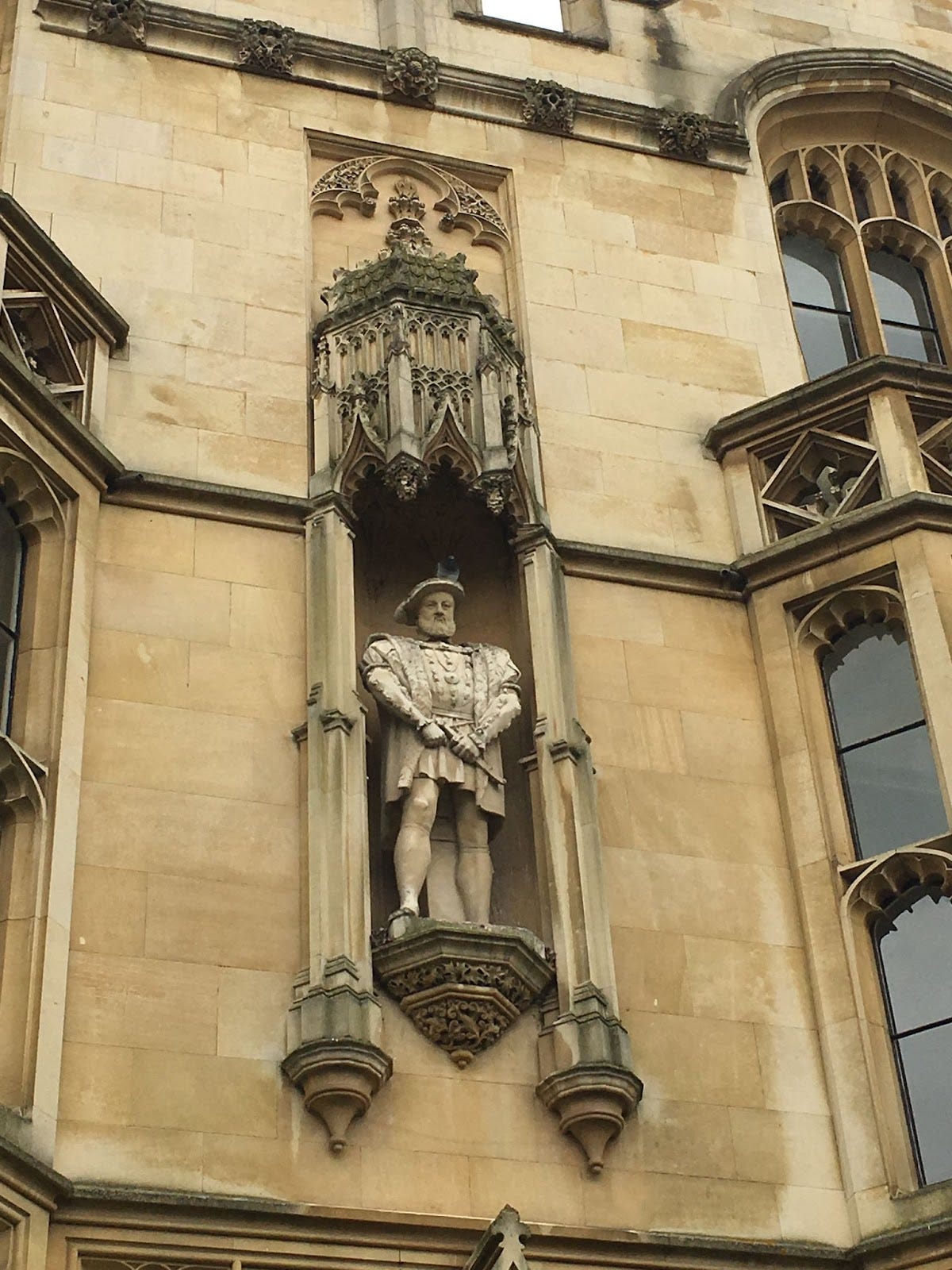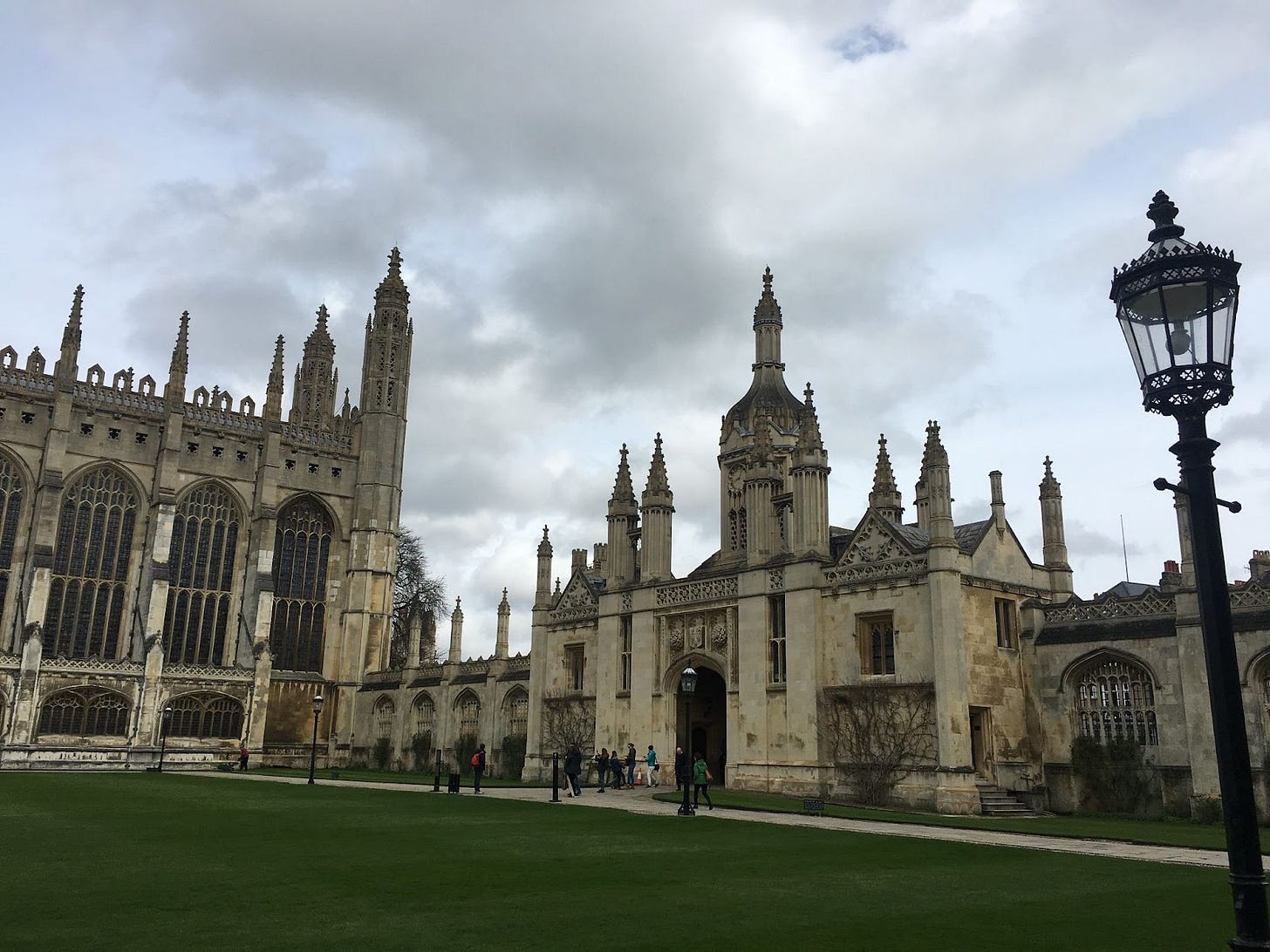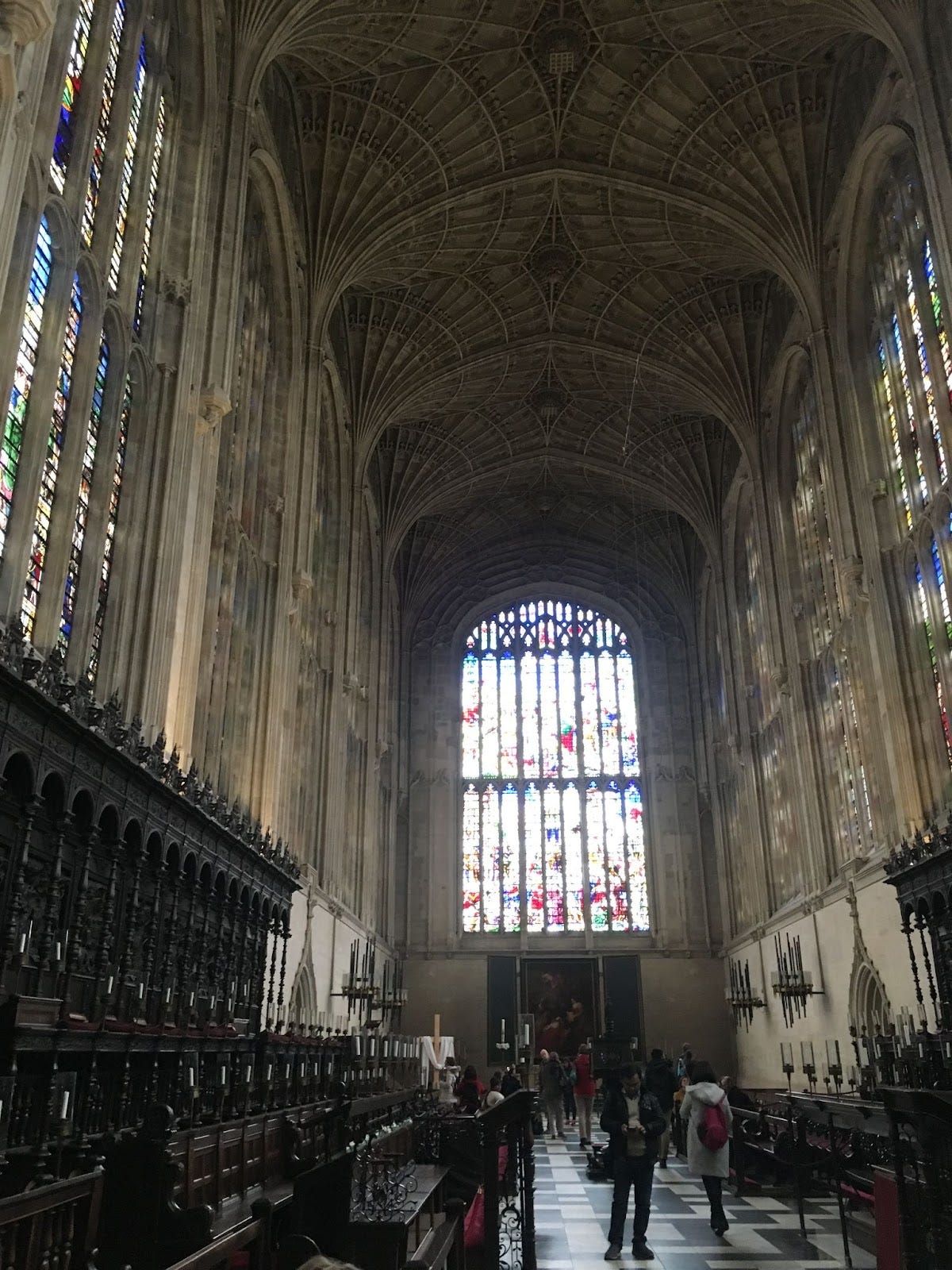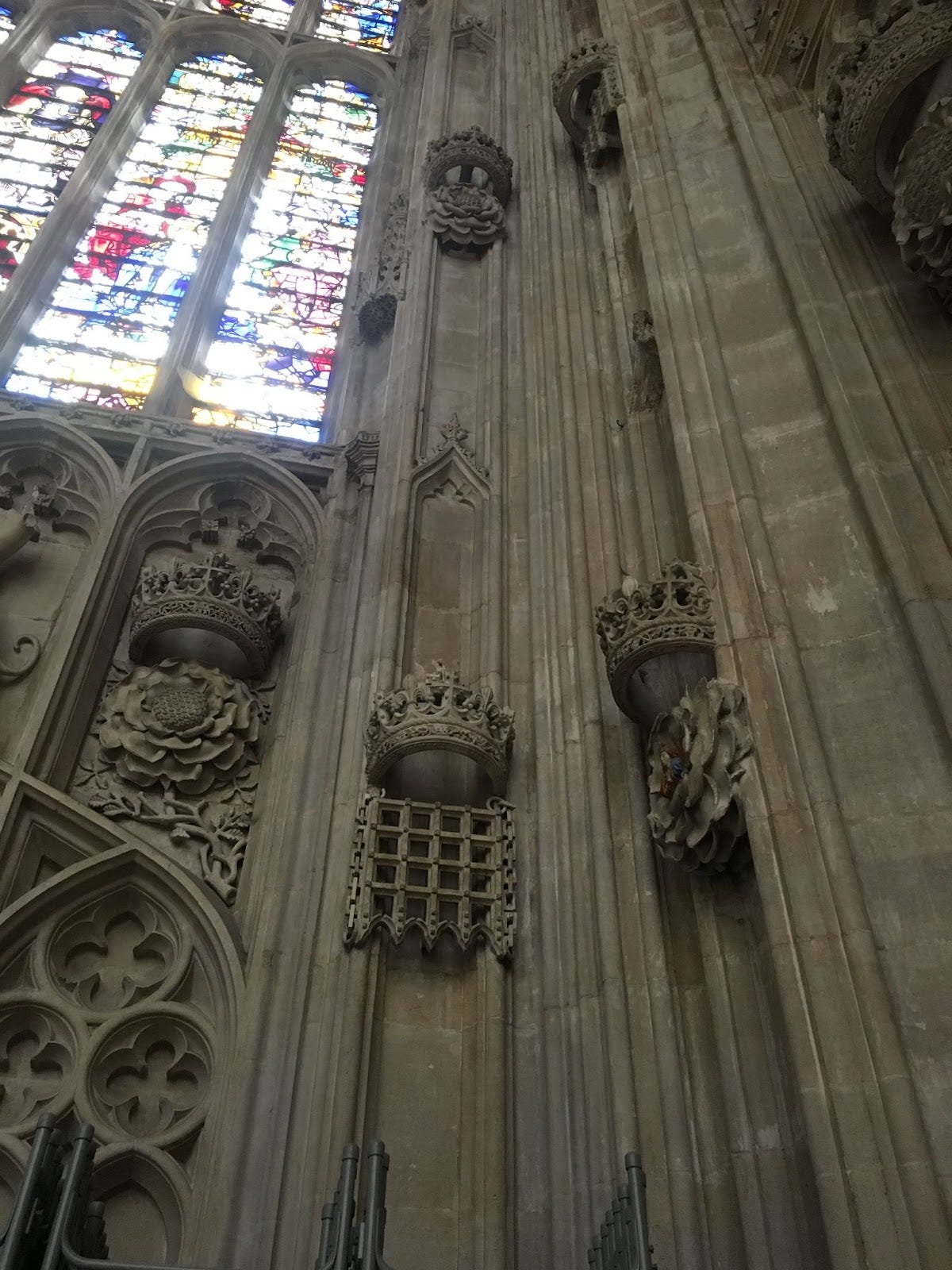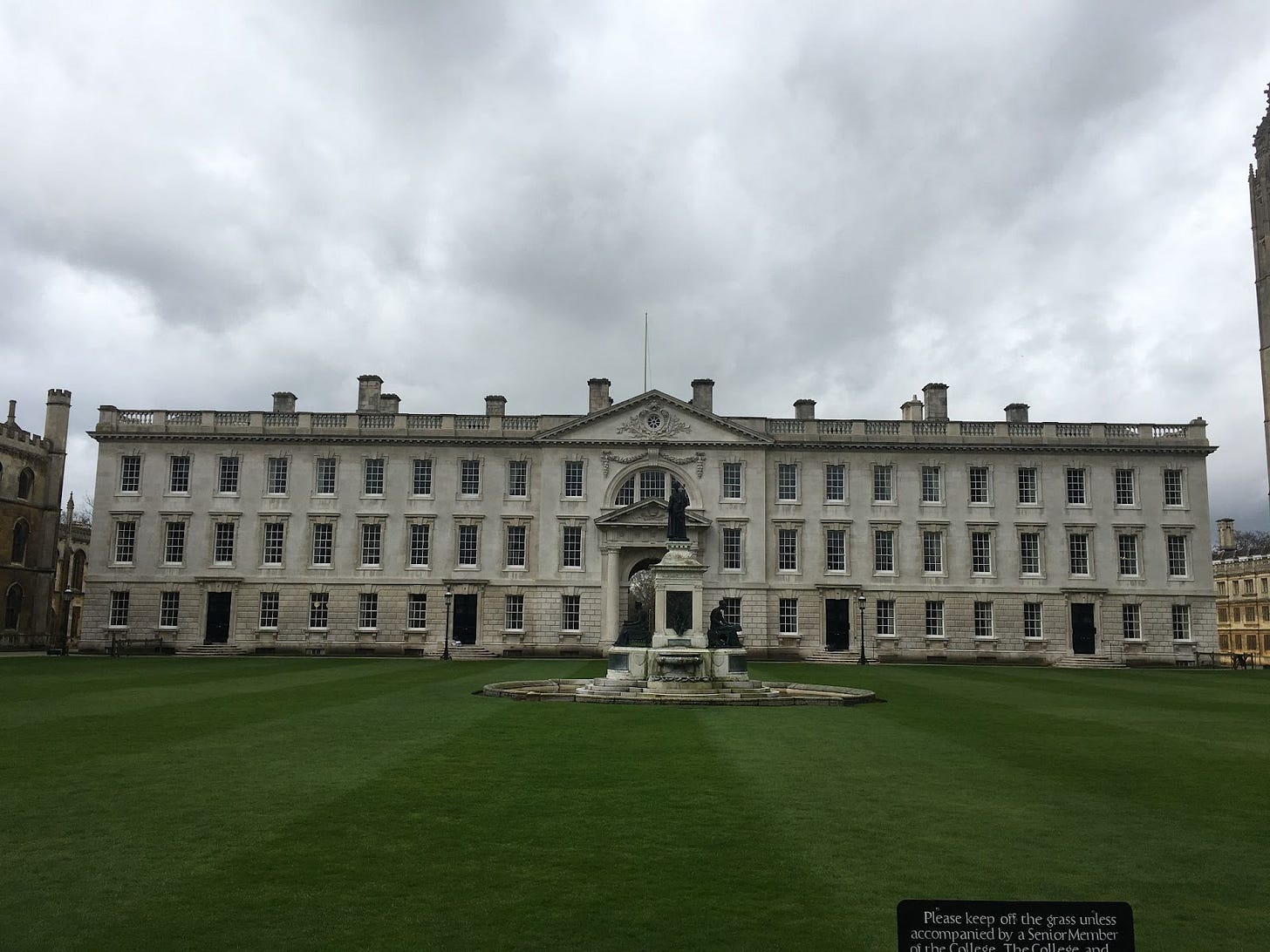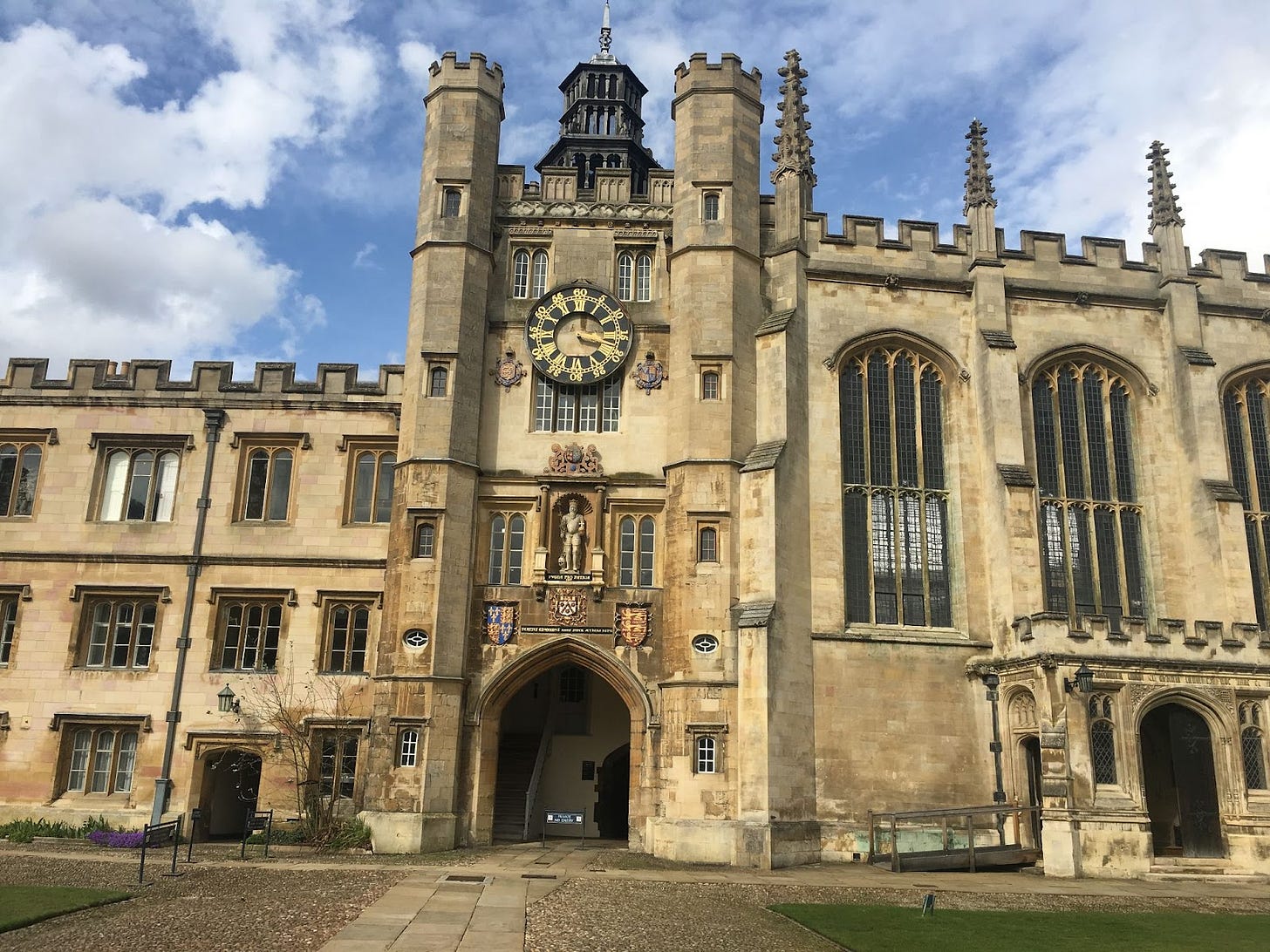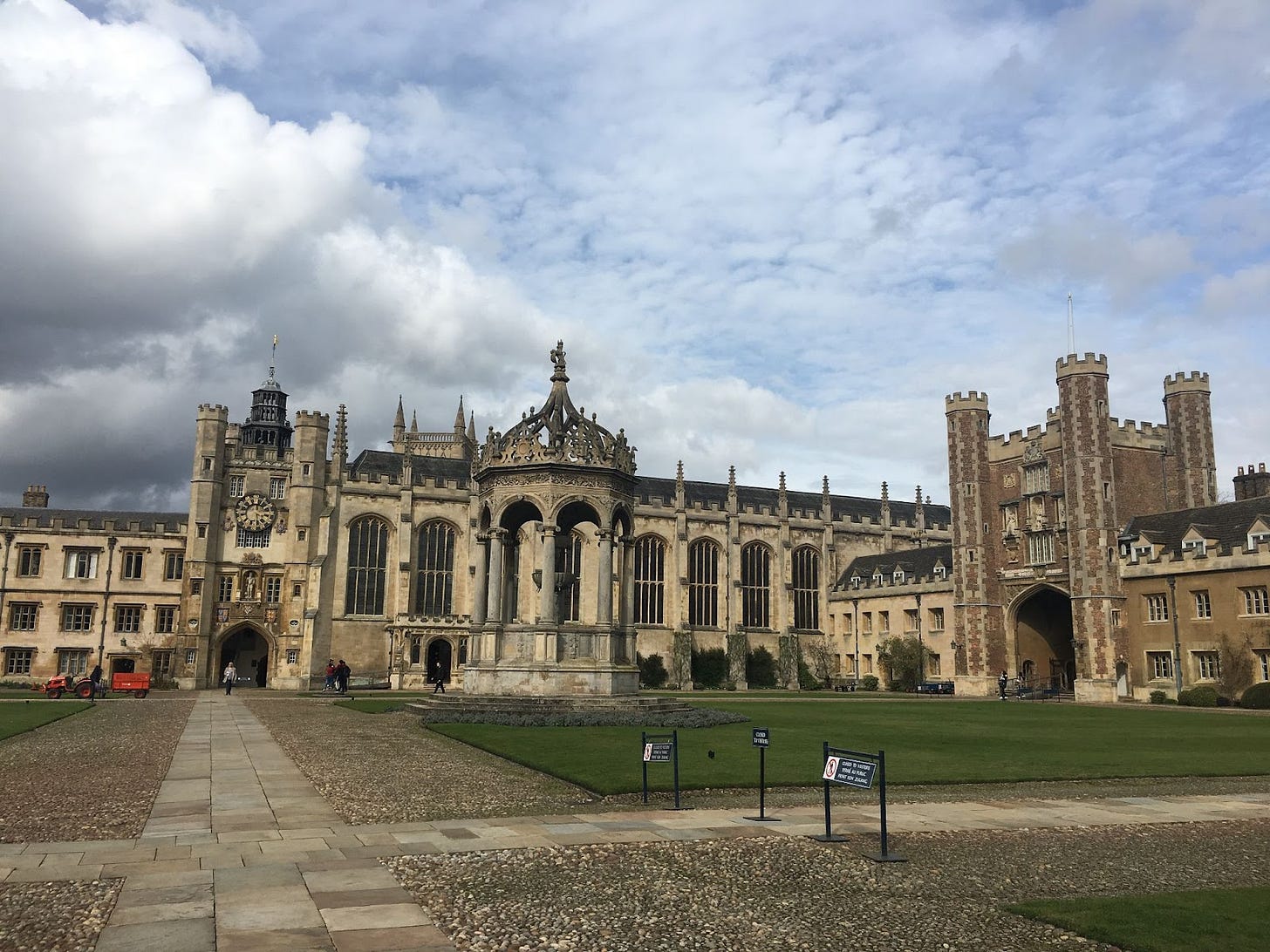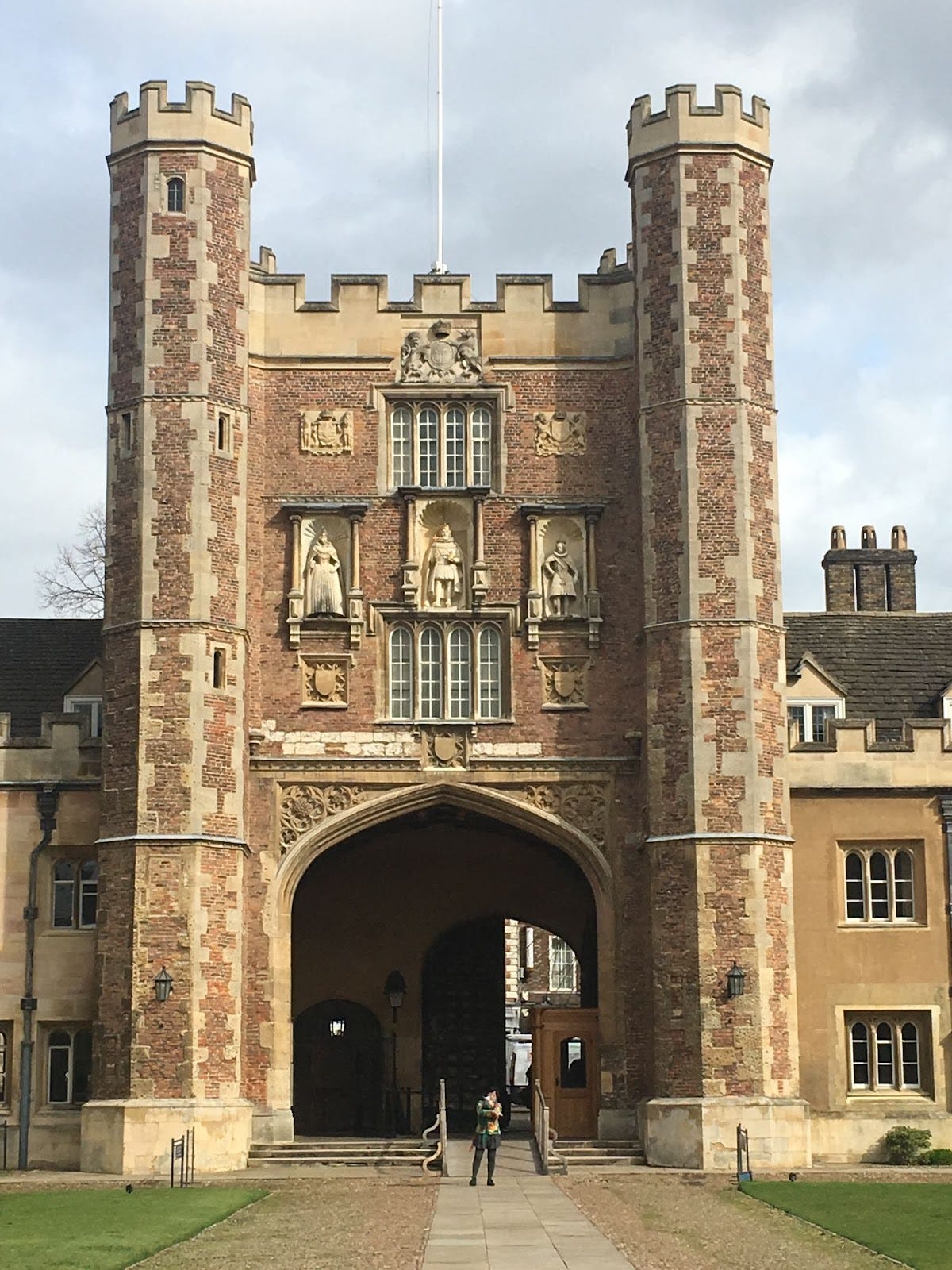Welcome
Happy Easter!
This week we switch it up and travel south-east of the country to Cambridge. Another university town.
We will hit the ‘big three’; Queens’, King’s & Trinity Colleges. They don’t get much bigger or more historic than them.
While Cambridge is different to Oxford, it is still very much a university town and a large proportion of their tourism comes from people visiting the various colleges.
A quick reminder that from April, Traveling Through History will be published bi-monthly from April, on the 2nd and 4th Fridays of the month.
This will free up space in my schedule for me to produce additional content for those with a paid subscription and get serious about writing my book!
Hope you enjoy our trip Traveling Through History in Cambridge this week.
Michelle
Savvy Travel Historian
March Theme: Cambridge Colleges - Queens’, King’s & Trinity Colleges
Queens’ College, Cambridge
Background
Founded by two Queens, hence the apostrophe being at the end (Queens’), the college is one of a number established in the 1440s.
Located south of the city centre in the main area of Cambridge.
History
Founded by Margart of Anjou in 1448, the college was ‘refounded’ in 1485 by Elizabeth Woodville, the ‘rival queen’ after the Wars of the Roses, hence the orthography of Queens’.
The buildings along Queen’s Lane were some of the first to be completed, with the library, chapel, gatehouse and President’s Lodge finished by 1460.
In 1477 and 1484 King Richard III made endowments to the college and his wife Anne Neville was to become the third queen to be patroness of the college. When Henry VII was victorious in 1485, he removed these endowments but continual improvements were made and the college’s building program continued.
The early 17thC saw attendance at the college become fashionable and during the Civil War, the colleges sent all of its silver to the king.
The colleges’ close proximity to the River Cam meant the cloisters (shown above) reportedly flooded to be waist-deep in February 1795.
The ‘Old Court’ (shown above), was built between 1448 and 1451, but from much cheaper stone than that used for King’s College (discussed further down) and contains a moondial, showing the phases either side of a full moon.
The spelling of the college's name was officially changed from Queen’s to Queens’ in 1823.
Mathematical Bridge
[Source]
Despite the myth that this wooden bridge built across the River Cam was designed by Sir Issac Newton, it was in fact built several decades after he died.
But it is still an engineering feat. The timbers are arranged in a series of tangents that help produce the arc of the bridge and the radial sections tie the tangents together so that the structure is rigid and self-supporting.
It joins two sections of the college and is used regularly by staff & students.
Queens’ also has a wall pillar letterbox that dates back to Queen Victoria and amongst the oldest in the UK.
In spring, the gardens and fields across the river at Queens’ College, known as ‘The Backs’ are in full bloom and provide a picturesque area to walk and sit in.
Famous Alumni
Perhaps Queens’ most famous alumni is the humanist Desiderius Erasmus who was at the college to study Greek but also taught as the Professor of Divinity there, after being invited by the Catholic bishop, cardinal and theologian and Chancellor of Cambridge, Saint John Fisher.
Other alumni include, John Frith the reformer and martyr, the uncle of Oliver Cromwell, also called Oliver, who was a member of the House of Commons, the son-in-law of William Shakespeare John Hall, Sir William Peel the former Governor of Hong Kong and actor, comedian and novelist Stephen Fry.
The Queen Mother became its Patron from its 550th anniversary in 2003 until her death in 2022. After her death, she left permission for the college to fly her personal standard on the first day of Michaelmas term in each year in memory of her.
More information on visiting Queen’s College can be found here:
Queen’s College Website
You can take a virtual tour of Queens’ College here:
Queens’ Virtual Tour
King's College, Cambridge
Background
Officially known as ‘The King’s College of Our Lady and Saint Nicholas in Cambridge’, King’s is perhaps best known to the rest of the world for their famous Choir and their concerts at Christmas time.
King’s is located right in the heart of Cambridge city centre.
History
Established initially by Henry VI, not long after founding Eton College, they originally only accepted students from Eton but the Wars of the Roses was to change that and not much progress was made until 1508 when Henry VII began to take an interest in the college.
Women were admitted to King’s in 1972.
The Chapel
King’s Chapel is thought to be one of the finest in English perpendicular Gothic architecture and its vaulted fan ceiling one of the largest.
The Rood screen (shown above), which separates the anti-chapel from the choir stalls, was installed for the marriage of Henry VIII and Anne Boleyn and is of Italian design and supports the large organ.
Above the altar hangs Ruben’s 1634 painting, ‘The Adoration of the Magi’ and when it was installed in 1968, there was a national outcry due to renovations that needed to be made to assist with its installation, which discovered 15th - 17thC lead coffins containing human remains.
During WWII, all the ancient/medieval stained glass was removed from the chapel in order to preserve it from any bombings that might occur.
Taking a century to build, the chapel features the Beaufort portcullis from the mother and grandmother of Henry VII & Henry VIII, the Tudor Rose and various crowns for its monarchs.
The Choir at King’s was created by Henry VI, when he founded the college in 1441 and it’s ‘Nine Lessons and Carols’, Christmas Eve service, especially the solo trebleist who sings the first verse of ‘Once in Royal David’s City’, (a much sought after position), is a highlight of the festive seasons and broadcast by the BBC worldwide. It was first broadcast on the radio in 1926.
The Gibbs Building
The second oldest building at King’s, the Gibbs Building, is 300 years old in 2024.
The interior is in urgent need of repair and renovation and the college has launched an appeal to raise the £25 million needed to do so.
Famous Alumni
Notable alumni from King’s include Alan Turing the mathematician and computer scientist, the economist John Maynard-Keynes, novelist Salman Rishdie and Robert Walpole, the first Prime Minister of Great Britain.
Further information on King’s can be found via their website:
If you’d like to take a virtual tool, click here:
Trinity College, Cambridge
Background
Trinity has the unique distinction of being the largest college in the country with the largest endowment of all those in Cambridge and Oxford. It has some £2 billion under management, is sister college with Christ Church in Oxford and has King Charles III amongst its illustrious alumni.
Located to the north west of the city centre, Trinity is an easy walk when touring the colleges of Cambridge.
History
In 1546, Henry VIII combined colleges King’s Hall and Michaelhouse and a few smaller hostels, to create the college. The buildings of the two former colleges date back to the early 14thC but the majority of the larger buildings date to the 16th and 17thC.
Towards the end of the Dissolution of the Monasteries, the King had Parliament pass an act that would have allowed him to suppress any college of his choosing.
Following a petition to Queen Catherine Parr, she persuaded the king to create a new college and because Henry didn’t want to use royal funds, he merged the two colleges mentioned to form Trinity.
The clocktower and the gatehouse are the oldest parts of the college in the ‘Great Court’.

